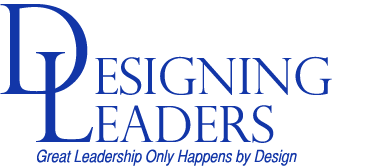Know Your Behavioral Biases
We all have a bias for or against at least one thing. I, for example, tend to discriminate against bigots (and yes, I see the irony in that). When it comes to making decisions for your firm, about business practices or personnel or whatever, it is not enough to say “don’t have a bias.” You do, and you need to accept that, and then try to minimize any negative impact of it.
Anyone who has studied economics (disclaimer: I majored in it) understands the idea that people make rational choices based on the information at hand. What sounds simple in theory, however, becomes much more complex once you realize that everyone’s idea of what is “rational” is based on their own perspective. “Where you stand depends on where you sit,” as one of my professors once said. (and as Rufus Miles said much earlier)
For this discussion, we are not necessarily talking about personal biases, like “I don’t like tall people” (though those can certainly be a factor in personnel decisions and you need to watch out for that). Our concern here is more about biases against or in favor of certain behaviors, such as always being risk-averse, or always preferring action over inaction, or always studying issues to death…something like that. These are not necessarily bad things, but if you do them all the time regardless of the situation then you will do them when they are not appropriate and they will have more impact on your decisions than the facts do. You should engage in these behaviors and make decisions based on them because the situation calls for it, NOT because that’s just how you always do things.
So how do you deal with your employees’ biases (which might be pretty obvious to you) as well as your own (which you might not even realize you have)? Well, you cannot just ignore them, because their effects will still be there. Instead, an article from of McKinsey & Company recommends more emphasis on the decision making process.
Improving strategic decision making therefore requires not only trying to limit our own (and others’) biases but also orchestrating a decision-making process that will confront different biases and limit their impact. To use a judicial analogy, we cannot trust the judges or the jurors to be infallible; they are, after all, human. But as citizens, we can expect verdicts to be rendered by juries and trials to follow the rules of due process. It is through teamwork, and the process that organizes it, that we seek a high-quality outcome.
One of the first things you should do — and one of the hardest — is identify the biases around you that affect strategic decisions. Identifying your employees’ biases might be easy, if you have watched them in action over time, but identifying your own can be tougher and will take some serious introspection. You might ask your peers or others with whom you work if they have noticed anything…chances are they have.
Once you have identified your biases, find a way to counter them. Find people with competing biases and give them an input (not necessarily a vote) into the decision process. Phrase problems in different terms and see if you get the same result. The goal is to devise a process that leads to an objective analysis of a situation, even though each individual involved in it cannot really be objective. The McKinsey article above offers some good suggestions for countering the biases you find and institutionalizing these methods.
The worst thing you can do is pretend that behavioral bias does not exist, or that it will have no impact if ignored. Your decisions, and the suggestions from your employees, will reflect your perspectives, and that is not always the same as the firm’s best interests. Be honest about it, and get past it.
- Posted by
 Dr William Thomas
Dr William Thomas - Posted in Leading
 Dec, 04, 2015
Dec, 04, 2015 Comments Off on Know Your Behavioral Biases
Comments Off on Know Your Behavioral Biases
Categories
- Book Reviews
- Change
- Communication
- COVID-19
- Creativity & Innovation
- Culture
- Diversity & Inclusion
- Employee Development
- Ethics
- Free Agents
- Health and Balance
- Leader Development
- Leading
- Management
- New Leaders
- Planning
- Recruiting and Retention
- Uncategorized
Archives
- August 2020
- July 2020
- June 2020
- October 2019
- September 2019
- August 2019
- July 2019
- June 2019
- May 2019
- March 2019
- February 2019
- January 2019
- December 2018
- November 2018
- October 2018
- September 2018
- August 2018
- July 2018
- June 2018
- May 2018
- April 2018
- March 2018
- February 2018
- January 2018
- December 2017
- November 2017
- October 2017
- September 2017
- August 2017
- July 2017
- June 2017
- May 2017
- April 2017
- March 2017
- February 2017
- January 2017
- December 2016
- November 2016
- October 2016
- September 2016
- August 2016
- July 2016
- June 2016
- May 2016
- April 2016
- March 2016
- February 2016
- January 2016
- December 2015
- November 2015
- October 2015
- September 2015
- August 2015
- July 2015
- June 2015
- May 2015
- April 2015
- March 2015
- February 2015
- January 2015
- December 2014
- November 2014
- October 2014


 Dec, 04, 2015
Dec, 04, 2015